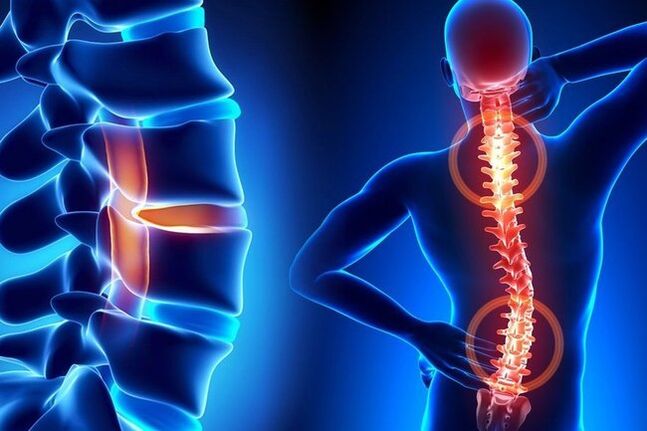Lumbar osteochondrosis is a fairly common disease. But, despite this, it is not recommended to let his treatment run under any circumstances, as this can lead to serious consequences, including disability. The older a person is, the more likely they are to get diseases such as lumbar osteochondrosis.

Older people with this disease, unfortunately, face an average of 90% of cases. For special risk groups, it includes those who do not lead a sufficiently mobile and active lifestyle. And people like that, you see, are now the majority.
The leading cause of lumbar osteochondrosis
In the case of uneven load distribution on the chin and trunk muscles, the intervertebral disc deforms and protrudes between the vertebrae. This leads to compression of the spinal nerves. The result is the so -called radicular syndrome, which is characterized by back pain and a marked decrease in mobility of the lumbar spine.

Conditions in which the back of a person with lumbar osteochondrosis does not occur suddenly, therefore experts recommend starting a solution to the problem before it becomes critical. So, it makes sense to test your body for any problems.
The main symptoms of osteochondrosis are as follows:
- pulling pain in the lumbar region (in the first stage of the disease, the pain is not too strong, but over time it gets stronger);
- mobility limitations in the lumbar region;
- problems while walking;
- numb limbs.
Due to the compression of the intervertebral canal, diseases of internal organs can also occur. This happens if the disease is severely neglected. If you notice any of the above symptoms, it is highly recommended that you immediately seek help from a specialist: neurologist or therapist. The doctor will prescribe a comprehensive therapy that can prevent the condition from getting worse.
How to act in the event of an acute attack of osteochondrosis
However, if your back turns at some point in an unexpected way, you should know the specific actions that need to be taken to anticipate the ambulance team, which must be called. So, we talk about the following manipulations:
- in any case a person cannot be helped to straighten, because such an action can not only trigger a new attack of pain, but also lead to a greater displacement of the vertebrae, which is fraught with the development of paralysis;
- if possible, help the person to lie down on the bed or on the couch;
- do not touch the sore back area;
- the victim should be given an anesthetic that will reduce the pain;
- if the pain syndrome is moderate, the lumbar zone should be treated with an anesthetic ointment.
Characteristics of the treatment of lumbar osteochondrosis
The main task that must be completed in the treatment of lumbar osteochondrosis is the elimination of pain. After this, some action needs to be taken to restore mobility and eliminate the cause of spinal nerve compression. Basically, the goal of treatment in any situation is to achieve complete recovery of the patient. In further cases, we are talking about the induction of stable remission with the restoration of most motor functions.
Treatment can be conservative and immediate. Conservative methods of treating lumbar osteochondrosis involve a course of painkillers, as well as general strengthening and anti-inflammatory therapies. Surgical treatment is carried out only in cases where there is a real risk of paralysis against the background of significant displacement of the vertebral disc. During the surgical operation, the hernia is removed, the intervertebral disc is replaced, as well as bone growth, adhesions and scars on the vertebrae are removed.
In some cases, the use of folk remedies can be a relatively effective method. For example, you can make compresses based on medicinal herbs. It is also useful to wrap the lumbar area with a scarf or shawl made of natural camel or other fur.
Rehabilitation features for osteochondrosis
To consolidate the results of the treatment carried out, it is highly recommended to take remedial measures very seriously. It is better to conduct it during remission in medical and physical training centers, which are open in almost any city. Rehabilitation programs are developed for each person separately, choosing the complex individually. It includes all types of treatments, including exercise therapy, massage and physiotherapy.



















